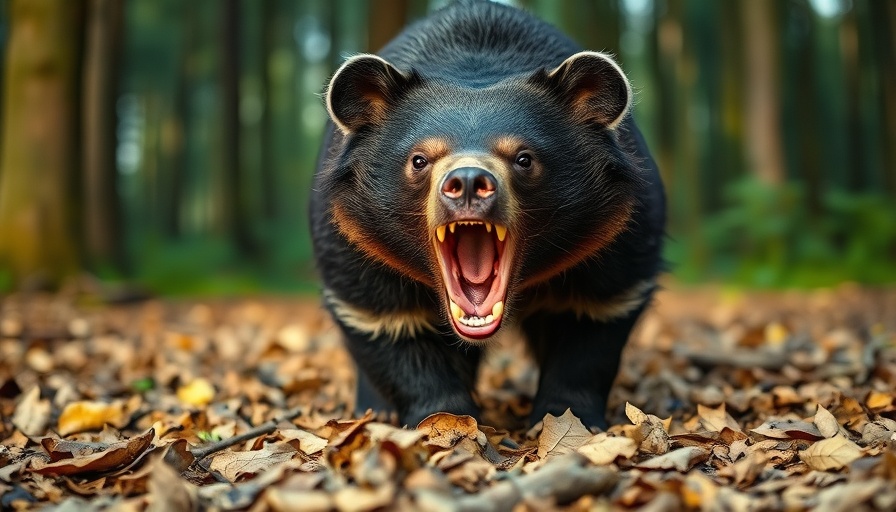
Unraveling the Sloth Bear's Aggression
In the rich tapestry of wildlife that exists globally, few creatures evoke as much fear and fascination as the sloth bear. This is especially true when digging deeper into the chilling narrative from 1957, where one sloth bear in Mysore, India, was responsible for the deaths of 12 individuals and left 24 others injured. Unlike more commonly known bears, sloth bears have unique behavioral characteristics that play a critical role in understanding this tragedy.
The Nature of Sloth Bears
Commonly overshadowed by their bear cousins like the grizzly and black bears, sloth bears are an intriguing species endemic to the Indian subcontinent. Weighing less and adorned with long shaggy fur, they stand apart physically. However, it’s their temperament that places them firmly on the map of notable wildlife phenomena. Generally characterized as more aggressive, sloth bears have been cited as the cause of more human fatalities than any other bear species, which steers us towards understanding their actions and motivations during conflicts.
Historical Insights into Human-Bear Interactions
The incident in Mysore isn't just a standalone case; it illuminates a broader theme surrounding human interactions with wildlife. Conflicts similar to this occur when natural habitats overlap with human activities, often exacerbated by deforestation and encroachment into bear territories. The 1957 bear incident serves as a tale warning humanity of the consequences when urban expansion meets untamed wilderness.
Lessons on Wildlife Conservation
Understanding the depth of such incidents prompts reflection on conservation efforts and how they relate to human communities. While sloth bears are often misunderstood, they play an essential role in their ecosystem. Educating the public about these creatures and fostering initiatives that encourage coexistence can significantly reduce conflicts and enhance the safety of local populations.
This reflective examination emphasizes the importance of awareness surrounding wildlife. Engaging with the sloth bear's narrative can lead us to better solutions and processes for managing our relationship with nature, ultimately promoting harmony between human needs and wildlife conservation.
 Add Row
Add Row  Add
Add 




Write A Comment